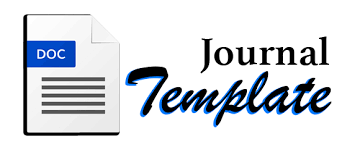PENGHIJAUAN LAHAN KOSONG BERBASIS PARTISIPATIF MENUJU EKOSISTEM BERKELANJUTAN DI DESA DUSONGYO, NARATHIWAT, THAILAND
DOI:
https://doi.org/10.21154/inej.v6i1.11435Keywords:
Penghijauan, Lahan Kosong, Ekosistem Berkelanjutan, Partisipasi Masyarakat, Participatory Action Research (PAR)Abstract
Krisis lingkungan hidup merupakan isu global yang semakin mendesak untuk diatasi, dengan dampak yang tidak hanya dirasakan di kawasan urban padat penduduk, tetapi juga mulai mengancam wilayah pedesaan. Desa Dusongyo, Narathiwat, Thailand, menjadi salah satu contoh wilayah rural yang terdampak, meskipun memiliki potensi ekologis berupa lahan kosong yang belum dimanfaatkan secara optimal. Merespons permasalahan tersebut, peneliti menginisiasi program Gerakan Hijau Desa Dusongyo yang berfokus pada penghijauan lahan kosong sebagai upaya restorasi lingkungan dan pembangunan ekosistem berkelanjutan. Program ini dirancang menggunakan pendekatan kolaboratif dengan metode Participatory Action Research (PAR), yang secara aktif melibatkan masyarakat setempat dalam seluruh tahapan kegiatan, mulai dari perencanaan, pelaksanaan, hingga evaluasi. Hasil implementasi menunjukkan perbaikan signifikan terhadap kondisi lingkungan fisik maupun kesadaran ekologi warga. Penghijauan yang dilakukan mampu mengurangi dominasi vegetasi liar, menciptakan ruang terbuka hijau yang fungsional dan terawat, serta meningkatkan keanekaragaman hayati lokal. Selain dampak ekologis, kegiatan ini juga memperkuat nilai-nilai partisipasi warga dan kolaborasi lintas sektor dalam upaya rehabilitasi lingkungan berbasis komunitas. Temuan ini menunjukkan bahwa penghijauan berbasis partisipatif di desa dapat menjadi strategi efektif dalam merespons krisis lingkungan secara berkelanjutan dan kontekstual.
References
Ardhiyansyah, A., Sulistyowati, N. W., Hidayati, N., & Handayani, E. (2023). Inovasi Berkelanjutan: Pendekatan Kolaboratif untuk Mengatasi Tantangan Sosial-Ekonomi di Provinsi Jawa Barat. Jurnal Pengabdian West Science, 2(06), Article 06. https://doi.org/10.58812/jpws.v2i6.451
Baum, F., MacDougall, C., & Smith, D. (2006). Participatory action research | Journal of Epidemiology & Community Health. Journal of Epidemiology and Community Health, 60(10), 854–857. https://doi.org/10.1136/jech.2004.028662
Cornwall, A. (2008). Unpacking ‘Participation’: Models, meanings and practices | Community Development Journal | Oxford Academic. Community Development Journal, 43(3), 269–283. https://doi.org/10.1093/cdj/bsn010
Jupri, A., Azhari, E., Siddiq, M. F., Isrowati, Rahayu, R. N., Virgota, A., Farista, Rozi, T., & Fadli. (2022). Penghijauan Dengan Jati Putih Untuk Membangun Lingkungan Berkelanjutan Di Desa Darmasari Kecamatan Sikur Kabupaten Lombok Timur | Jurnal Pengabdian Magister Pendidikan IPA. Jurnal Pengabdian Magister Pendidikan IPA, 7(3), 1032–1035. https://doi.org/10.29303/jpmpi.v7i3.9260
Kuripan Kidul, P. D. (2025, January 5). Langkah Jitu Merevitalisasi Lahan Terdegradasi untuk Hijaukan Kuripan Kidul – Desa Kuripan Kidul Kab. Cilacap. https://kuripankidul.desa.id/langkah-jitu-merevitalisasi-lahan-terdegradasi-untuk-hijaukan-kuripan-kidul/
Kurniawan, H. A., Risnawati, R., Nurhajijah, N., Lubis, L., & Seva, T. (2023). Pemanfaatan Lahan Kosong Sebagai Penerapan Teknologi Melalui Kegiatan KKN Tematik. Jurnal Abdi Insani, 10(2), 803–808. https://doi.org/10.29303/abdiinsani.v10i2.948
Marianta, Y. I. W. (2011). AKAR KRISIS LINGKUNGAN HIDUP. Studia Philosophica et Theologica, 11(2), Article 2. https://doi.org/10.35312/spet.v11i2.72
Pretty, J. N. (1995). Participatory learning for sustainable agriculture. World Development, 23(8), 1247–1263. https://doi.org/10.1016/0305-750X(95)00046-F
Rahmat, A., & Mirnawati, M. (2020). Model Participation Action Research Dalam Pemberdayaan Masyarakat. Aksara: Jurnal Ilmu Pendidikan Nonformal, 6(1), Article 1. https://doi.org/10.37905/aksara.6.1.62-71.2020
Safitri, D. S., Soenarno, S. M., & Noer, S. (2024). Etnobotani Tumbuhan Liar sebagai Obat Herbal di Lingkungan Perumahan Grand Tamansari 3 Kabupaten Bekasi. EduBiologia: Biological Science and Education Journal, 4(2), 40–49. https://journal.lppmunindra.ac.id/index.php/edubiologia/article/view/23719
Satmaidi, E. (2015). Konsep Deep Ecology Dalam Pengaturan Hukum Lingkungan. Supremasi Hukum : Jurnal Penelitian Hukum, 24(2), Article 2. https://doi.org/10.33369/jsh.24.2.192-105
Taufikurrohman, M., & Rahman, B. (2024). Studi Literatur: Penanganan Degradasi Lahan di DAS. Jurnal Kajian Ruang, 4(1), Article 1. https://doi.org/10.30659/jkr.v4i1.29595
Downloads
Published
Issue
Section
License
Copyright (c) 2025 Moh. Khoridatul Huda, Rofiqoh Firdausi, Jamaliatul Badriyah, Siska Maghfirotul Laili Janah, Amalia Kartika, Usman

This work is licensed under a Creative Commons Attribution-NonCommercial-ShareAlike 4.0 International License.
Please find the rights and licenses in InEJ. By submitting the article/manuscript of the article, the author(s) agree with this policy. No specific document sign-off is required.1. License
The non-commercial use of the article will be governed by the Creative Commons Attribution license as currently displayed on Creative Commons Attribution-NonCommercial-ShareAlike 4.0 International License.
2. Author(s)' Warranties
The author warrants that the article is original, written by stated author(s), has not been published before, contains no unlawful statements, does not infringe the rights of others, is subject to copyright that is vested exclusively in the author and free of any third party rights, and that any necessary written permissions to quote from other sources have been obtained by the author(s).
3. User/Public Rights
The spirit of InEJ is to disseminate articles published are as free as possible. Under the Creative Commons license, InEJ permits users to copy, distribute, display, and perform the work for non-commercial purposes only. Users will also need to attribute authors and InEJ on distributing works in the journal and other media of publications. Unless otherwise stated, the authors are public entities as soon as their articles got published.
4. Rights of Authors
Authors retain all their rights to the published works, such as (but not limited to) the following rights;
Copyright and other proprietary rights relating to the article, such as patent rights,
The right to use the substance of the article in own future works, including lectures and books,
The right to reproduce the article for own purposes,
The right to self-archive the article,
The right to enter into separate, additional contractual arrangements for the non-exclusive distribution of the article's published version (e.g., post it to an institutional repository or publish it in a book), with an acknowledgment of its initial publication in this journal (InEJ: Indonesian Engagement Journal).
5. Co-Authorship
If the article was jointly prepared by more than one author, any authors submitting the manuscript warrants that he/she has been authorized by all co-authors to be agreed on this copyright and license notice (agreement) on their behalf, and agrees to inform his/her co-authors of the terms of this policy. InEJ will not be held liable for anything that may arise due to the author(s) internal dispute. InEJ will only communicate with the corresponding author.
6. Royalties
Being an open accessed journal and disseminating articles for free under the Creative Commons license term mentioned, author(s) aware that InEJ entitles the author(s) to no royalties or other fees.
7. Miscellaneous
InEJ will publish the article (or have it published) in the journal if the article’s editorial process is successfully completed. The editors of Journal may modify the article to a style of punctuation, spelling, capitalization, referencing and usage that deems appropriate. The author acknowledges that the article may be published so that it will be publicly accessible and such access will be free of charge for the readers as mentioned in point 3.



